An Improved Interval-Valued Hesitant Fuzzy Multi-Criteria Group Decision-Making Method and Applications
Abstract
:1. Introduction
2. Preliminaries
- (1)
- (2)
- (3)
- (4)
3. Interval-Valued Hesitant Fuzzy Information Aggregation with BM Techniques
4. Research Fund Project Evaluation Problem in China
- C1 = Academic significance and application prospects;
- C2 = Innovation;
- C3 = Research contents and research objectives;
- C4 = Scientific research foundation.
- Step 1
- Obtaining information for the experts to assess
- Step 2
- Ranking the applications
- Different values of parameters p and q could lead to different scores and a different ranking order. For example, when p = q = 5, the second order of the alternative is while this result varies when p and q were set with other values.
- The scores obtained by the IVHFWBM operator are symmetrical. For example, the scores are not changed between p = 0.001 (q = 10) and p = 10 (q = 0.001). This result verified the phenomenon described in Section 3.
- Although the ranking order varied when p and q was set to different values, the best alternative is always . This indicates that the ranking method based on IVHFWBM operators offers good stability.
- (1)
- p = 0.1, q ∈ [0, 10]
- ♦
- When p = 0.1 and q ∈ (0, 2.963), the ranking order of the five alternatives is
- ♦
- When p = 0.1 and q ∈ (2.963, 10), the ranking order of the five alternatives is
- (2)
- p = 10, q ∈ [0, 10]
- ♦
- When p = 10 and q ∈ (0, 4.331], the ranking order of the five alternatives is
- ♦
- When p = 10 and q ∈ (4.331, 8.911), the ranking order of the five alternatives is
- ♦
- When p = 10 and q ∈ (8.911, 10), the ranking order of the five alternatives is
5. Comparison of the Proposed Approach with Other Approaches
6. Concluding Remarks
Author Contributions
Conflicts of Interest
References
- Bonferroni, C. Sulle Medie Multiple di Potenze; Bolletino Matematica Italiana: Italy, 1950; Volume 5, pp. 267–270. [Google Scholar]
- Beliakov, G.; Pradera, A.; Calvo, T. Aggregation Functions: A Guide for Practitioners; Springer: Heidelberg, Germany, 2007; Volume 221. [Google Scholar]
- Yu, D.J. Triangular Atanassov’s intuitionistic fuzzy Bonferroni mean and application to supplier selection. J. Intell. Fuzzy Syst. 2015, 28, 2785–2791. [Google Scholar] [CrossRef]
- Yu, D.J. Intuitionistic fuzzy geometric Heronian mean aggregation operators. Appl. Soft Comput. 2013, 13, 1235–1246. [Google Scholar] [CrossRef]
- Yager, R.R. On generalized Bonferroni mean operators for multi-criteria aggregation. Int. J. Approx. Reason. 2009, 50, 1279–1286. [Google Scholar] [CrossRef]
- Verma, R. Generalized Bonferroni mean operator for fuzzy number intuitionistic fuzzy sets and its application to multi-attribute decision making. Int. J. Intell. Syst. 2015, 30, 499–519. [Google Scholar] [CrossRef]
- Gong, Y.; Hu, N.; Zhang, J.; Liu, G.; Deng, J. Multi-attribute group decision making method based on geometric Bonferroni mean operator of trapezoidal interval type-2 fuzzy numbers. Comput. Ind. Eng. 2015, 81, 167–176. [Google Scholar] [CrossRef]
- He, Y.D.; He, Z.; Chen, H.Y. Intuitionistic fuzzy interaction Bonferroni means and its application to multiple attribute decision making. IEEE Trans. Cybern. 2015, 45, 116–128. [Google Scholar] [PubMed]
- Xu, Z.S.; Yager, R.R. Intuitionistic fuzzy Bonferroni means. IEEE Trans. Syst. Man Cybern. Part B Cybern. 2011, 41, 568–578. [Google Scholar]
- Yu, D.J. Intuitionistic fuzzy theory based typhoon disaster evaluation in Zhejiang Province, China: A comparative perspective. Nat. Hazards 2015, 75, 2559–2576. [Google Scholar] [CrossRef]
- Yu, D.J. A scientometrics review on aggregation operator research. Scientometrics 2015, 105, 115–133. [Google Scholar] [CrossRef]
- Yu, D.J.; Shi, S.S. Researching the development of Atanassov intuitionistic fuzzy set: Using a citation network analysis. Appl. Soft Comput. 2015, 32, 189–198. [Google Scholar] [CrossRef]
- Xia, M.M.; Xu, Z.S.; Zhu, B. Generalized intuitionistic fuzzy Bonferroni means. Int. J. Intell. Syst. 2012, 27, 23–47. [Google Scholar] [CrossRef]
- Xu, Z.S.; Chen, Q. A multi-criteria decision making procedure based on interval-valued intuitionistic fuzzy bonferroni means. J. Syst. Sci. Syst. Eng. 2011, 20, 217–228. [Google Scholar] [CrossRef]
- Zhu, B.; Xu, Z.S. Hesitant fuzzy Bonferroni means for multi-criteria decision making. J. Oper. Res. Soc. 2013, 64, 1831–1840. [Google Scholar] [CrossRef]
- Zhu, B.; Xu, Z.S.; Xia, M.M. Hesitant fuzzy geometric Bonferroni means. Inf. Sci. 2012, 205, 72–85. [Google Scholar] [CrossRef]
- Chen, N.; Xu, Z.; Xia, M. Interval-valued hesitant preference relations and their applications to group decision making. Knowl.-Based Syst. 2013, 37, 528–540. [Google Scholar] [CrossRef]
- Wei, G.; Zhao, X.; Lin, R. Some hesitant interval-valued fuzzy aggregation operators and their applications to multiple attribute decision making. Knowl.-Based Syst. 2013, 46, 43–53. [Google Scholar] [CrossRef]
- Wei, G.; Zhao, X. Induced hesitant interval-valued fuzzy Einstein aggregation operators and their application to multiple attribute decision making. J. Intell. Fuzzy Syst. 2013, 24, 789–803. [Google Scholar]
- Wei, G.W.; Alsaadi, F.E.; Hayat, T.; Alsaedi, A. A linear assignment method for multiple criteria decision analysis with hesitant fuzzy sets based on fuzzy measure. Int. J. Fuzzy Syst. 2016, 1–8. [Google Scholar] [CrossRef]
- Yu, D.J. Group decision making under interval-valued multiplicative intuitionistic fuzzy environment based on Archimedean t-conorm and t-norm. Int. J. Intell. Syst. 2015, 30, 590–616. [Google Scholar] [CrossRef]
- Yu, D.J.; Zhang, W.Y.; Huang, G. Dual hesitant fuzzy aggregation operators. Technol. Econ. Dev. Econ. 2015, 22, 1–16. [Google Scholar] [CrossRef]
- He, X.R.; Wu, Y.Y.; Yu, D.J. Intuitionistic fuzzy multi-criteria decision making with application to job hunting: A comparative perspective. J. Intell. Fuzzy Syst. 2016, 30, 1935–1946. [Google Scholar] [CrossRef]
- Torra, V. Hesitant fuzzy sets. Int. J. Intell. Syst. 2010, 25, 529–539. [Google Scholar] [CrossRef]
- Li, D.F.; Yang, J. A difference-index based ranking method of trapezoidal intuitionistic fuzzy numbers and application to multi-attribute decision making. Math. Comput. Appl. 2015, 25, 25–38. [Google Scholar] [CrossRef]
- Wen, X.; Ouyang, J.; Liu, Y. A method of hybrid multiple attributes group decision making with risk considering decision-makers ‘confidence’. Math. Comput. Appl. 2015, 20, 62–75. [Google Scholar] [CrossRef]
- Fu, S. Multiple attribute decision-making model of grey target based on positive and negative bull’s-eye. Math. Comput. Appl. 2015, 20, 189–199. [Google Scholar] [CrossRef]
- Jin, F.; Ni, Z.; Chen, H. Interval-valued hesitant fuzzy Einstein prioritized aggregation operators and their applications to multi-attribute group decision making. Soft Comput. 2016, 20, 1863–1878. [Google Scholar] [CrossRef]
- Yu, D.J.; Li, D.F.; Merigó, J.M. Dual hesitant fuzzy group decision making method and its application to supplier selection. Int. J. Mach. Learn. Cybern. 2016. [Google Scholar] [CrossRef]
- Peng, J.J.; Wang, J.Q.; Wang, J.; Zhang, H.Y.; Chen, X.H. Simplified neutrosophic sets and their applications in multi-criteria group decision-making problems. Int. J. Syst. Sci. 2016, 47, 2342–2358. [Google Scholar] [CrossRef]
- Yu, D.J. Archimedean aggregation operators based on dual hesitant fuzzy set and their application to GDM. Int. J. Uncertain. Fuzziness Knowl.-Based Syst. 2015, 23, 761–780. [Google Scholar] [CrossRef]
- Yu, D.J.; Zhang, W.Y.; Xu, Y.J. Group decision making under hesitant fuzzy environment with application to personnel evaluation. Knowl.-Based Syst. 2013, 52, 1–10. [Google Scholar] [CrossRef]
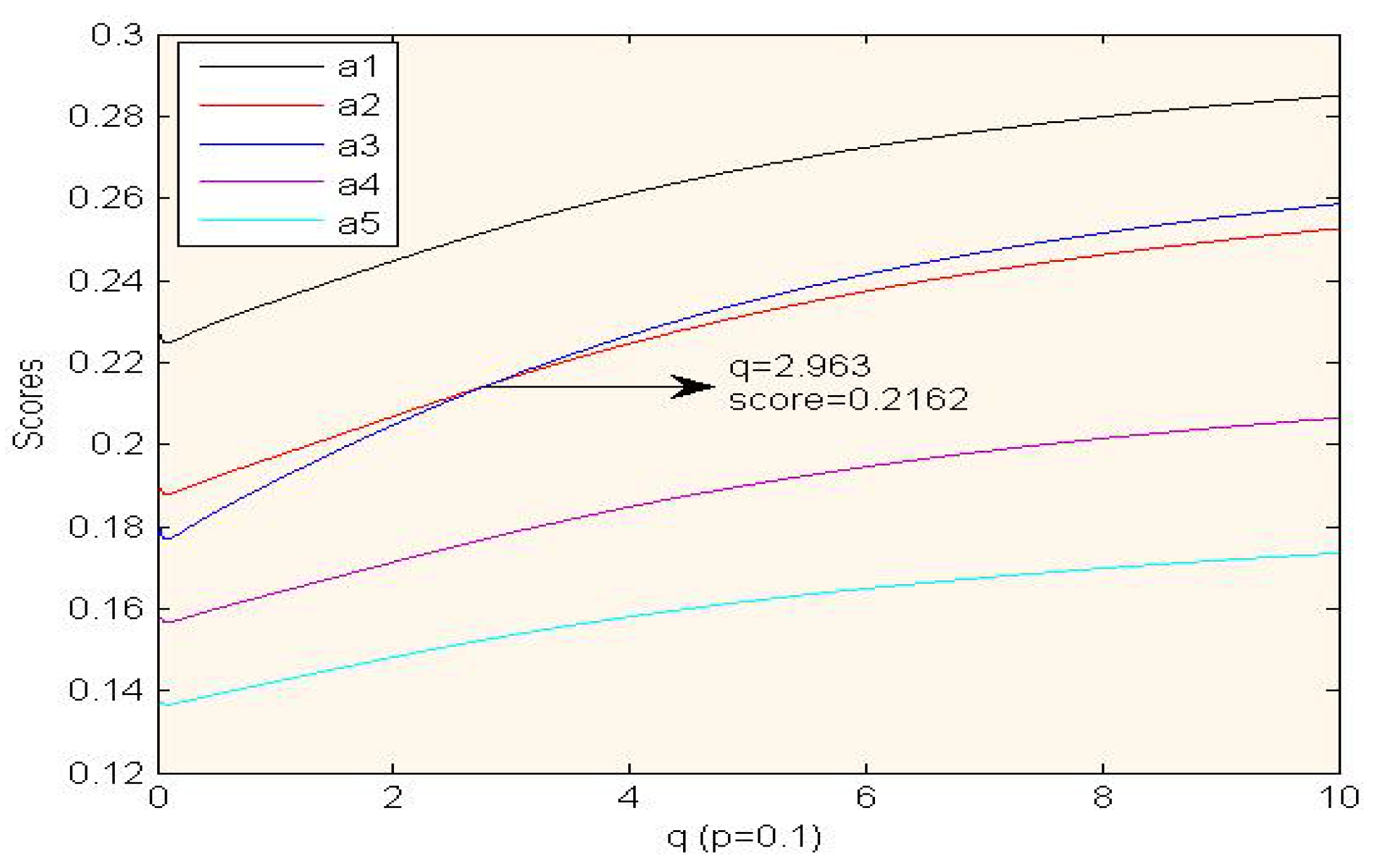
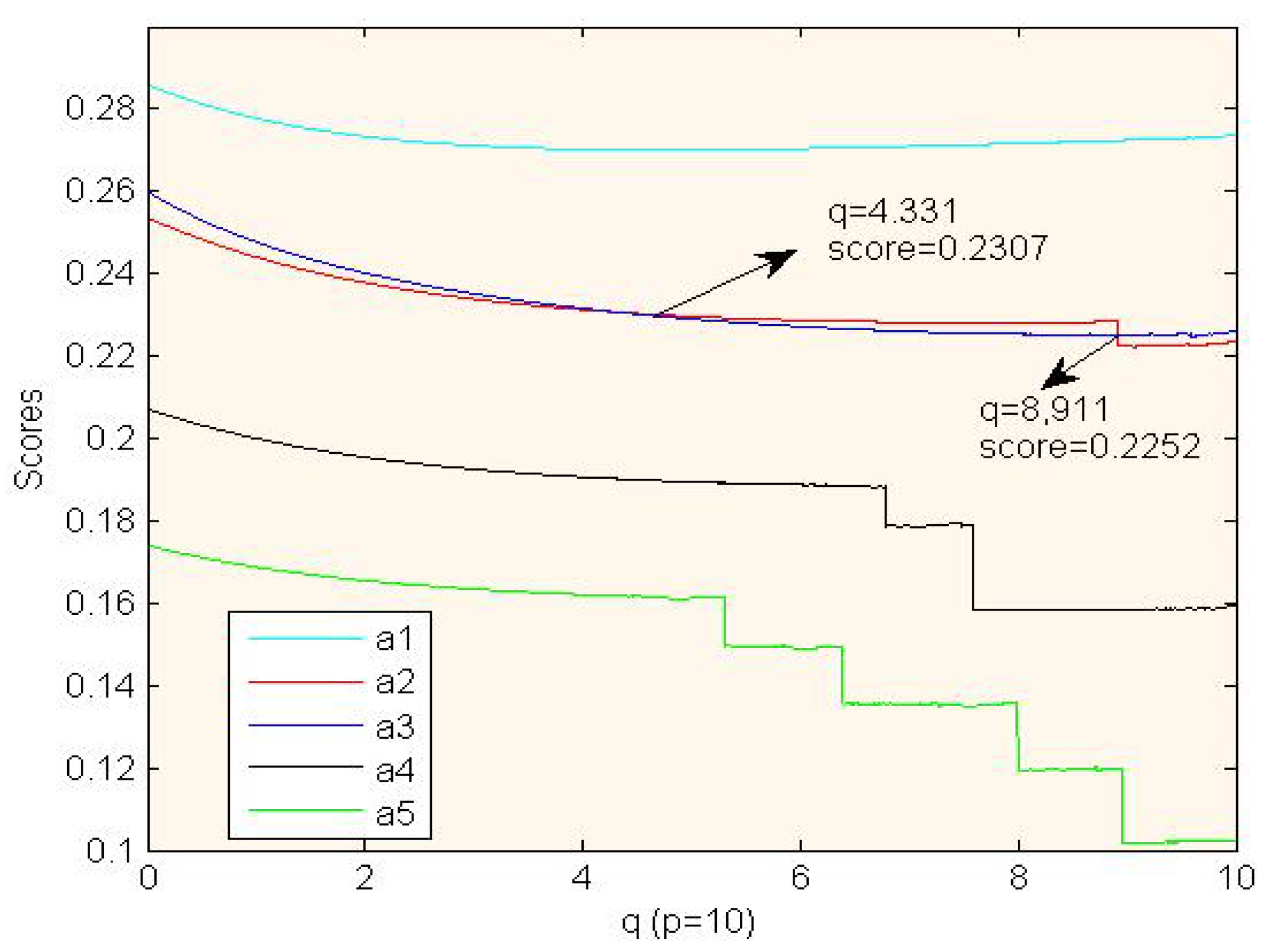
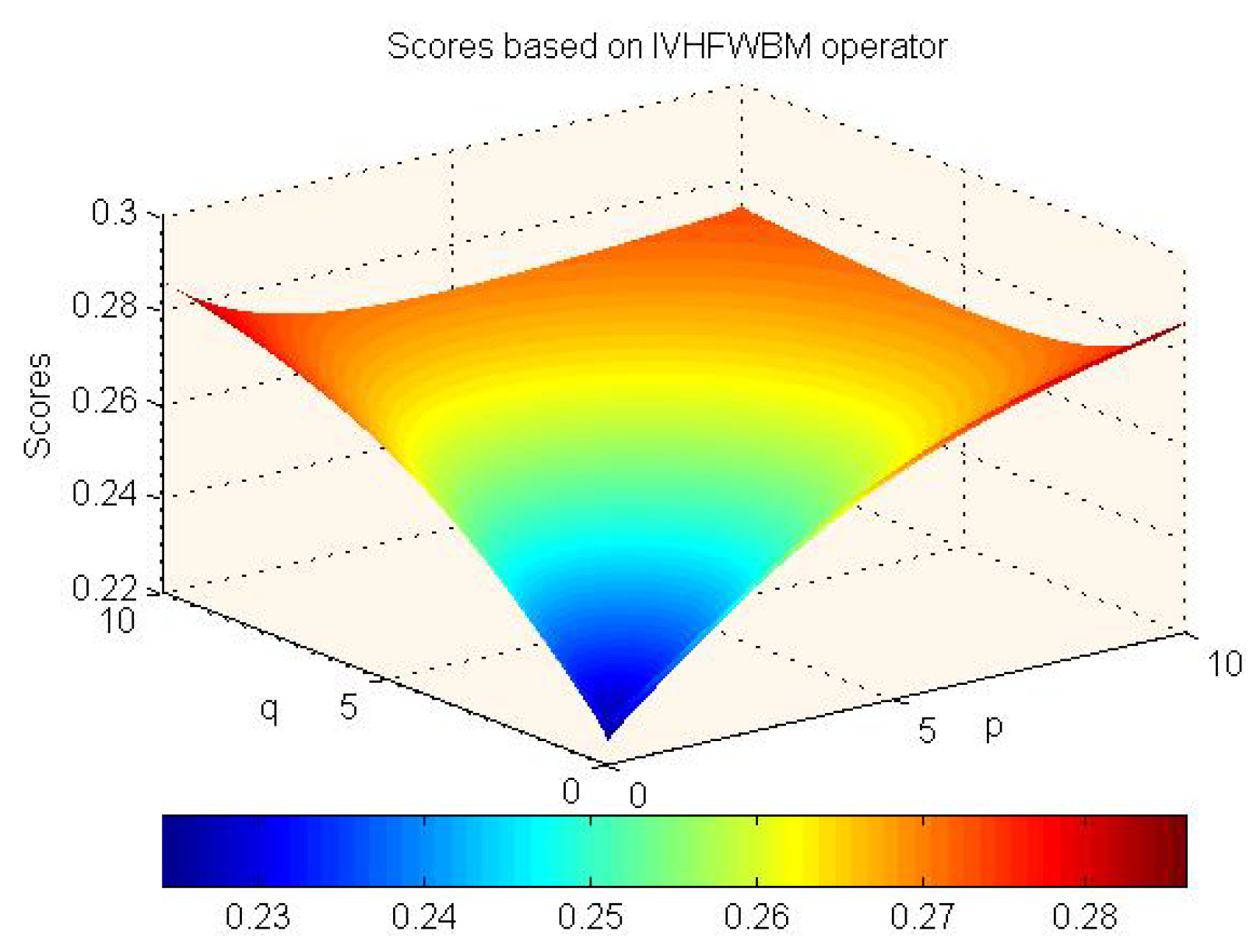

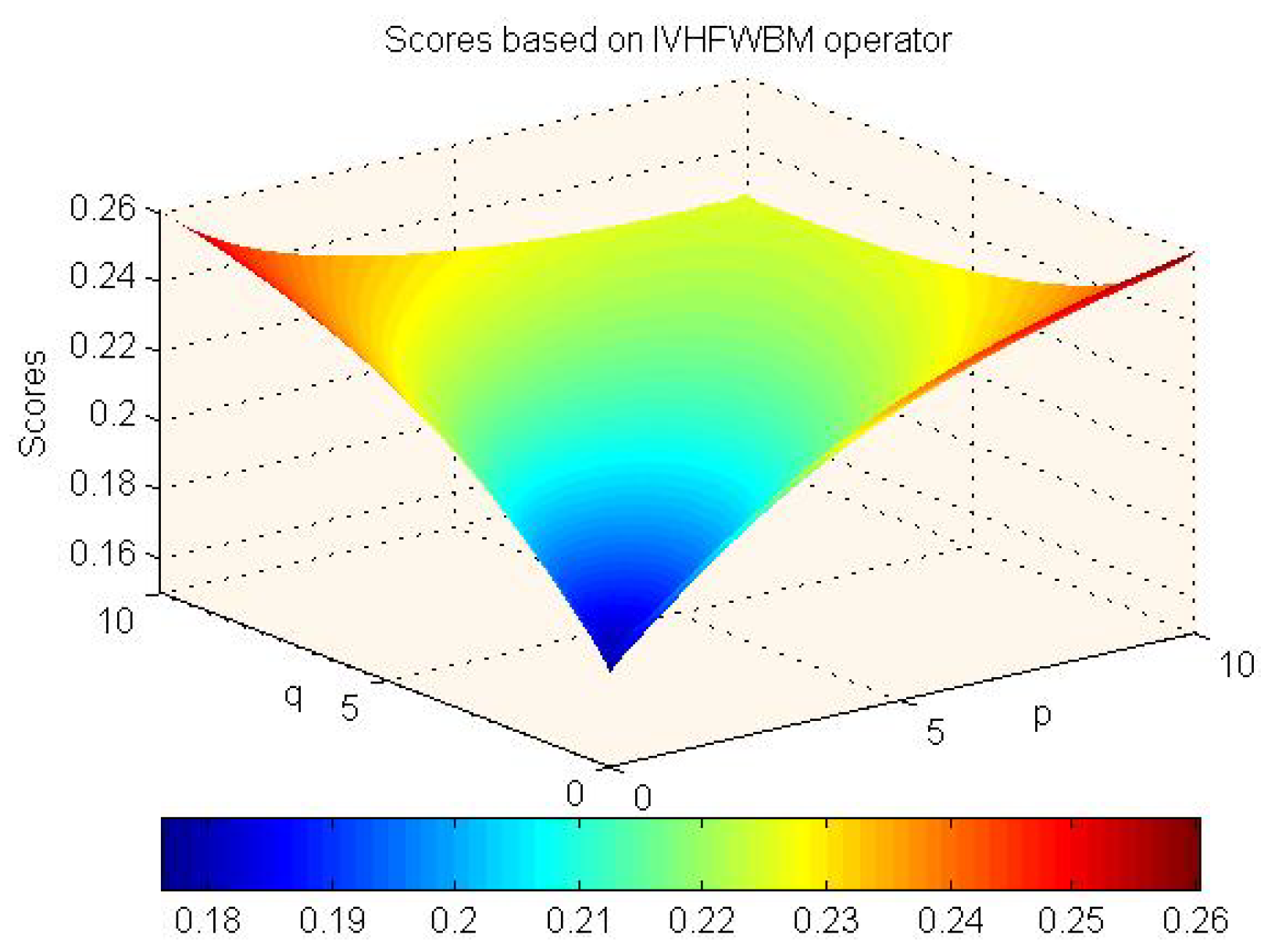

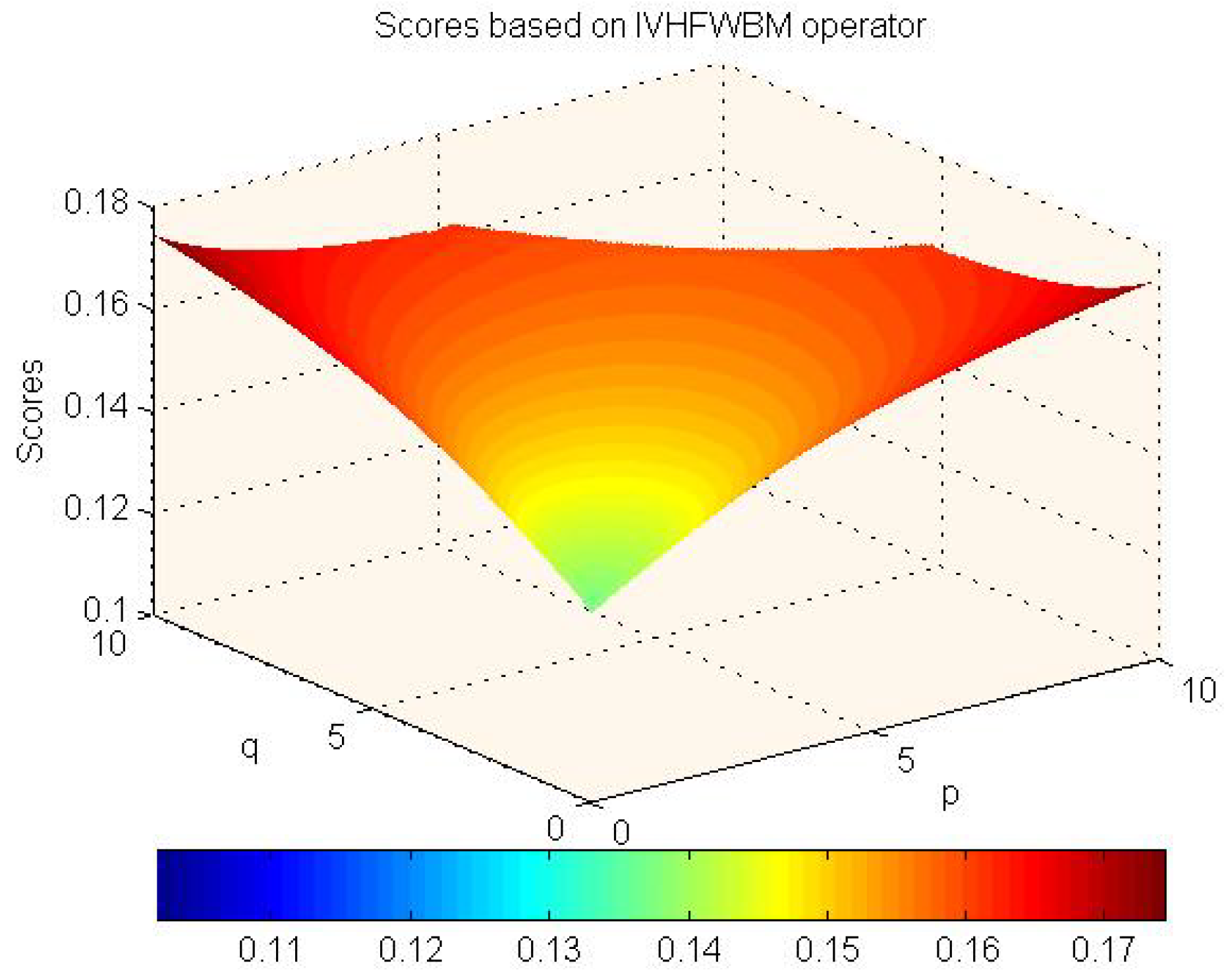
| No. | Criteria | Evaluation Description | Evaluation Results | Minimum Possibility | Maximum Possibility |
|---|---|---|---|---|---|
| 1 | Academic significance and application prospects () | The maximum or minimum possibility that the alternative meets the criterion | |||
| 0.4 | 0.6 | ||||
| 0.3 | 0.6 | ||||
| 0.5 | 0.8 | ||||
| 0.2 | 0.4 | ||||
| 2 | Innovation () | The maximum or minimum possibility that the alternative meets the criterion | 0.6 | 0.8 | |
| 0.6 | 0.7 | ||||
| 0.5 | 0.7 | ||||
| 0.3 | 0.4 | ||||
| 0.5 | 0.6 | ||||
| 3 | Research contents and research objectives () | The maximum or minimum possibility that the alternative meets the criterion | 0.6 | 0.8 | |
| 0.2 | 0.4 | ||||
| 0.1 | 0.3 | ||||
| 0.4 | 0.6 | ||||
| 0.3 | 0.5 | ||||
| 4 | Scientific research foundation () | The maximum or minimum possibility that the alternative meets the criterion | 0.5 | 0.9 | |
| 0.4 | 0.5 | ||||
| 0.6 | 0.7 | ||||
| 0.3 | 0.5 | ||||
| 0.5 | 0.6 |
| No. | Criteria | Evaluation Description | Evaluation Results | Minimum Possibility | Maximum Possibility |
|---|---|---|---|---|---|
| 1 | Academic significance and application prospects () | The maximum or minimum possibility that the alternative meets the criterion | |||
| 0.6 | 0.8 | ||||
| 0.3 | 0.6 | ||||
| 0.5 | 0.6 | ||||
| 0.2 | 0.7 | ||||
| 2 | Innovation () | The maximum or minimum possibility that the alternative meets the criterion | 0.4 | 0.6 | |
| 0.6 | 0.7 | ||||
| 0.6 | 0.9 | ||||
| 0.6 | 0.7 | ||||
| 0.5 | 0.6 | ||||
| 3 | Research contents and research objectives () | The maximum or minimum possibility that the alternative meets the criterion | 0.6 | 0.8 | |
| 0.2 | 0.4 | ||||
| 0.4 | 0.5 | ||||
| 0.4 | 0.6 | ||||
| 0.3 | 0.5 | ||||
| 4 | Scientific research foundation () | The maximum or minimum possibility that the alternative meets the criterion | 0.5 | 0.9 | |
| 0.5 | 0.9 | ||||
| 0.6 | 0.7 | ||||
| 0.3 | 0.5 | ||||
| 0.5 | 0.6 |
| No. | Criteria | Evaluation Description | Evaluation Results | Minimum Possibility | Maximum Possibility |
|---|---|---|---|---|---|
| 1 | Academic significance and application prospects () | The maximum or minimum possibility that the alternative meets the criterion | |||
| 0.5 | 0.7 | ||||
| 0.5 | 0.8 | ||||
| 0.4 | 0.7 | ||||
| 0.2 | 0.4 | ||||
| 2 | Innovation () | The maximum or minimum possibility that the alternative meets the criterion | 0.5 | 0.6 | |
| 0.6 | 0.7 | ||||
| 0.6 | 0.7 | ||||
| 0.6 | 0.7 | ||||
| 0.3 | 0.6 | ||||
| 3 | Research contents and research objectives () | The maximum or minimum possibility that the alternative meets the criterion | 0.6 | 0.8 | |
| 0.5 | 0.6 | ||||
| 0.4 | 0.5 | ||||
| 0.4 | 0.6 | ||||
| 0.3 | 0.5 | ||||
| 4 | Scientific research foundation () | The maximum or minimum possibility that the alternative meets the criterion | 0.5 | 0.9 | |
| 0.5 | 0.9 | ||||
| 0.6 | 0.7 | ||||
| 0.4 | 0.4 | ||||
| 0.3 | 0.6 |
| Alternatives | C1 | C2 | C3 | C4 |
|---|---|---|---|---|
| {[0.3, 0.7], [0.4, 0.6]} | {[0.6, 0.8], [0.4, 0.6], [0.5, 0.6]} | {[0.6, 0.8]} | {[0.5, 0.9]} | |
| {[0.4, 0.6], [0.6, 0.8], [0.5, 0.7]} | {[0.6, 0.7]} | {[0.2, 0.4], [0.5, 0.6]} | {[0.4, 0.5], [0.5, 0.9]} | |
| {[0.3, 0.6], [0.5, 0.8]} | {[0.5, 0.7], [0.6, 0.9], [0.6, 0.7]} | {[0.1, 0.3], [0.4, 0.5]} | {[0.6, 0.7]} | |
| {[0.5, 0.8], [0.5, 0.6], [0.4, 0.7]} | {[0.3, 0.4], [0.6, 0.7]} | {[0.4, 0.6]} | {[0.3, 0.5], [0.4, 0.4]} | |
| {[0.2, 0.4], [0.2, 0.7]} | {[0.5, 0.6], [0.3, 0.6]} | {[0.3, 0.5]} | {[0.5, 0.6], [0.3, 0.6]} |
| Parameters | a1 | a2 | a3 | a4 | a5 | Ranking |
|---|---|---|---|---|---|---|
| 0.2860 | 0.2538 | 0.2601 | 0.2073 | 0.1741 | ||
| 0.2579 | 0.2163 | 0.2135 | 0.1792 | 0.1540 | ||
| 0.2738 | 0.2235 | 0.2260 | 0.1595 | 0.1021 |
© 2016 by the authors; licensee MDPI, Basel, Switzerland. This article is an open access article distributed under the terms and conditions of the Creative Commons Attribution (CC-BY) license (http://creativecommons.org/licenses/by/4.0/).
Share and Cite
Ding, Z.; Wu, Y. An Improved Interval-Valued Hesitant Fuzzy Multi-Criteria Group Decision-Making Method and Applications. Math. Comput. Appl. 2016, 21, 22. https://doi.org/10.3390/mca21020022
Ding Z, Wu Y. An Improved Interval-Valued Hesitant Fuzzy Multi-Criteria Group Decision-Making Method and Applications. Mathematical and Computational Applications. 2016; 21(2):22. https://doi.org/10.3390/mca21020022
Chicago/Turabian StyleDing, Zhenhua, and Yingyu Wu. 2016. "An Improved Interval-Valued Hesitant Fuzzy Multi-Criteria Group Decision-Making Method and Applications" Mathematical and Computational Applications 21, no. 2: 22. https://doi.org/10.3390/mca21020022





